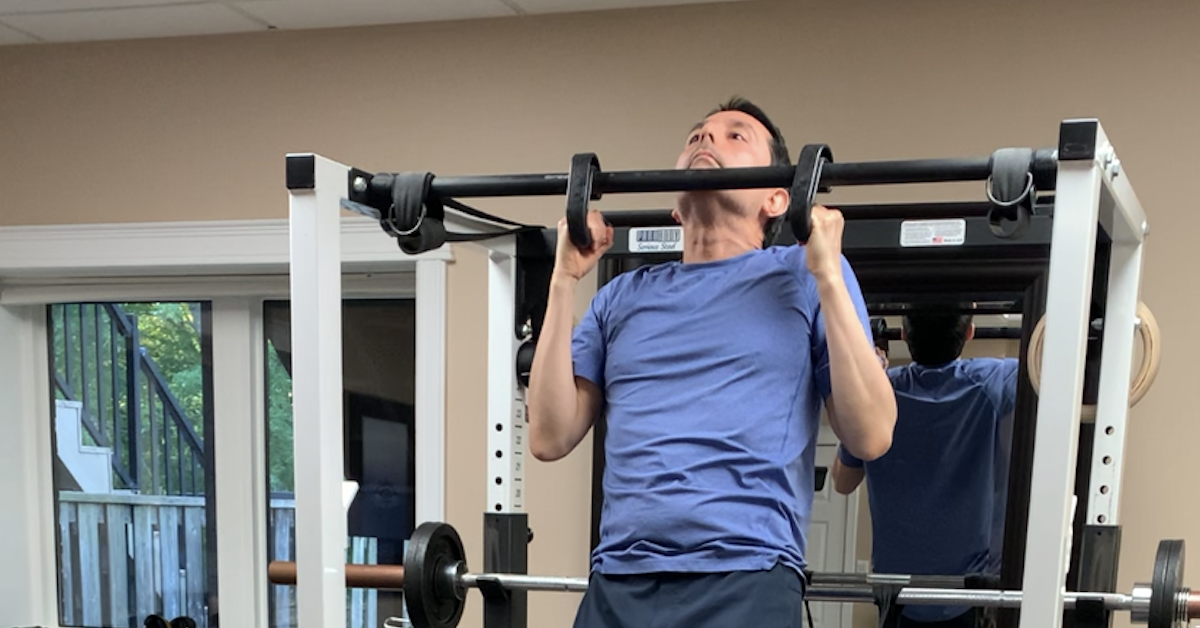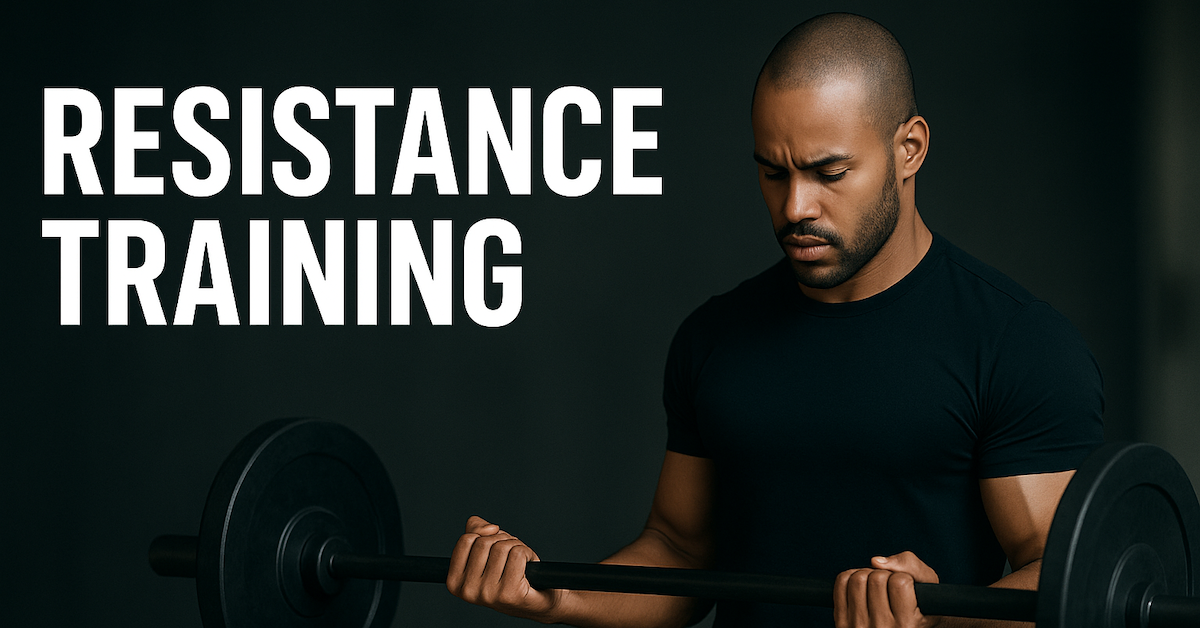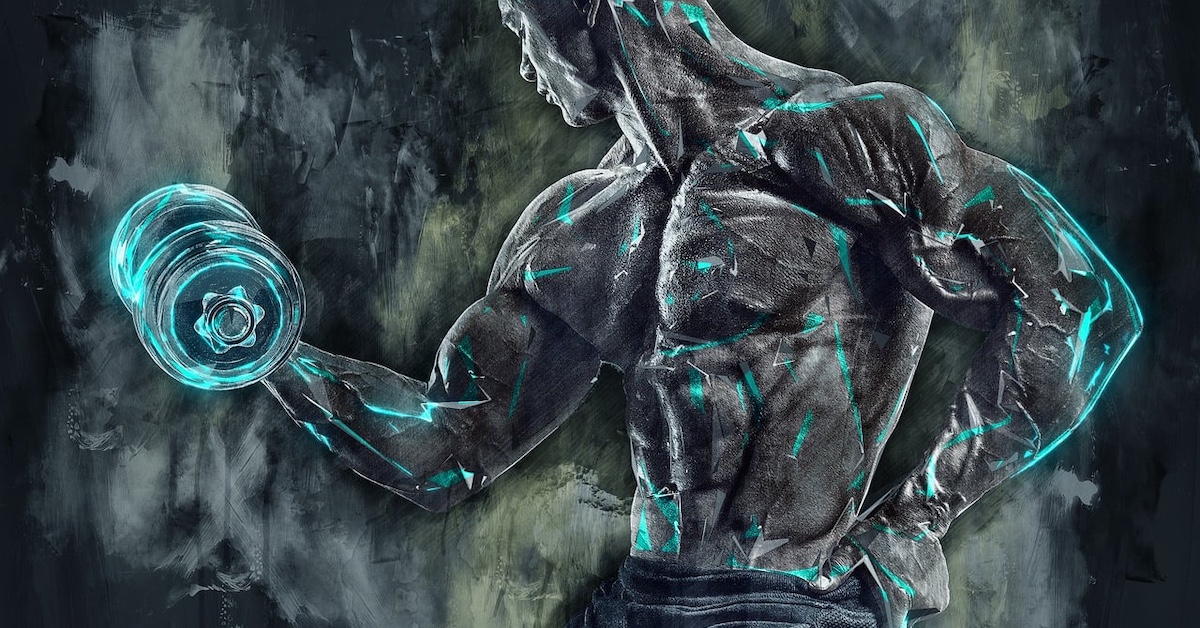Everything in context!
In the video below, I’m squatting with 225 pounds. It might not look like much weight, but here’s the catch: I’m doing 20 reps at the end of my workout! By that point, I’ve already knocked out multiple sets of front squats, glute-ham raises, reverse hypers, low-pulley knee-ins, and one-leg calf raises.
This is one of my favorite methods to build muscle and lose fat — and it delivers one heck of a cardio effect. By the end, you’ll feel like you just ran a marathon!
The back squat is a multi-joint movement that activates over 200 muscles in the human body. When you crank out 20 reps with a decent load, you create a massive oxygen debt (that’s the cardiorespiratory effect). You’ll burn plenty of energy during the workout, and afterward your body will expend even more to repair and regenerate (that’s the fat-loss effect). Finally, your body adapts to the challenge by beefing up its resources to come back stronger (that’s the muscle-building effect).
Mental Fortitude Required
It takes serious mental toughness to push through. Your body will want to stop several times throughout the set, but don’t give in! Listen to the wise words of Britney Spears and keep “working” until you reach 20. It’s okay to pause for a breath or two between reps, but don’t quit until you hit your target.
And don’t get sloppy! Notice in the video that I use full range of motion with controlled tempo. You may not be able to go all the way down, but you can control the speed. Never sacrifice quality for quantity. If you can’t do them right, don’t do them at all!
Go Beyond Your Maximum
Work up to a 10RM load. Yes, you read that correctly — a load you could normally lift for only 10 reps. With sheer willpower, you’ll grind out 20 reps, pausing briefly as needed between reps without racking the bar. Think of it like doing 11 sets: the first set is 10 reps, followed by 11 “singles” with short rests in between.
Of course, start conservatively. It’s better to begin with a 15–20RM load and succeed than to go too heavy and fail.
I used to recommend “20 with 10RM” squats at the beginning of a workout, but the problem is that one set leaves you gassed for everything else. Doing them at the end works much better. Yes, you may have to reduce the load slightly, but you’ll get far more out of the session — and the results are incredible… that is, if you can pull it off!
Variations
With this method, I typically prescribe back squats or safety-bar squats at the end of a squat day, and dumbbell deadlifts or hex-bar deadlifts at the end of a deadlift day. That said, exercise selection can vary depending on the situation.
Give it a shot — but for safety’s sake, dial “9” and “1” on your cell phone before you start, keep it close by… and good luck!

From Zero to Two: Leo’s Chin-Up Breakthrough
When Leo began training with me in September 2024, our first goal was to improve body composition — lose fat,

Resistance Training Foundations: How to Progress Safely and Build Real Strength
Resistance training isn’t just for bodybuilders. Whether you’re just starting out, returning after a break, or training for performance, knowing

Neck Extensions Before Arm Curls: Unlock More Strength
When most people warm up for arm curls, they’ll hit a few light sets or maybe stretch out a bit.
follow
Error: No feed with the ID 2 found.
Please go to the Instagram Feed settings page to create a feed.
